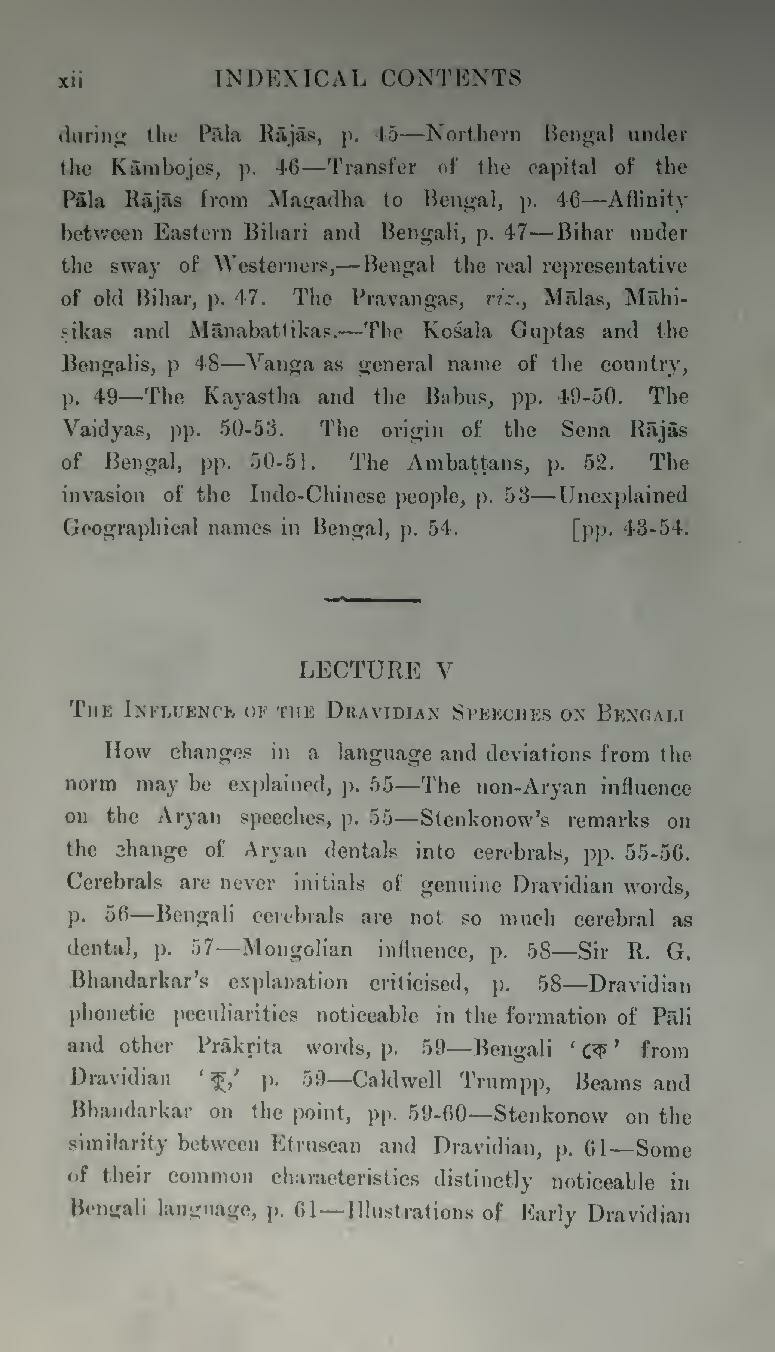during the Pāla Rājās, p. 45—Northern Bengal under the Kāmbojes, p. 46—Transfer of the capital of the Pāla Rājās from Magadha to Bengal, p. 46—Affinity between Eastern Bihari and Bengali, p. 47—Bihar under the sway of Westerners,— Bengal the real representative of old Bihar, p. 47. The Pravangas, viz., Mālas, Māhiṣikas and Mānabattikas.—The Kośala Guptas and the Bengalis, p 48—Vanga as general name of the country, p. 49—The Kayastha and the Babus, pp. 49-50. The Vaidyas, pp. 50-53. The origin of the Sena Rājās of Bengal, pp. 50-51. The Ambaṭṭans, p. 52. The invasion of the Indo-Chinese people, p. 53—Unexplained Geographical names in Bengal, p. 54.
LECTURE V
The Influence of the Dravidian Speeches on Bengali
How changes in a language and deviations from the norm may be explained, p. 55—The non-Aryan influence on the Aryan speeches, p. 55—Stenkonow's remarks on the change of Aryan dentals into cerebrals, pp. 55-56. Cerebrals are never initials of genuine Dravidian words, p. 56—Bengali cerebrals are not so much cerebral as dental, p. 57—Mongolian influence, p. 58—Sir R. G. Bhandarkar's explanation criticised, p. 58—Dravidian phonetic peculiarities noticeable in the formation of Pāli and other Prākṛita words, p. 59—Bengali 'কে' from Dravidian 'কু,' p. 59—Caldwell Trumpp, Beams and Bhandarkar on the point, pp. 59-60—Stenkonow on the similarity between Etruscan and Dravidian, p. 61—Some of their common characteristics distinctly noticeable in Bengali language, p. 61—Illustrations of Early Dravidian

